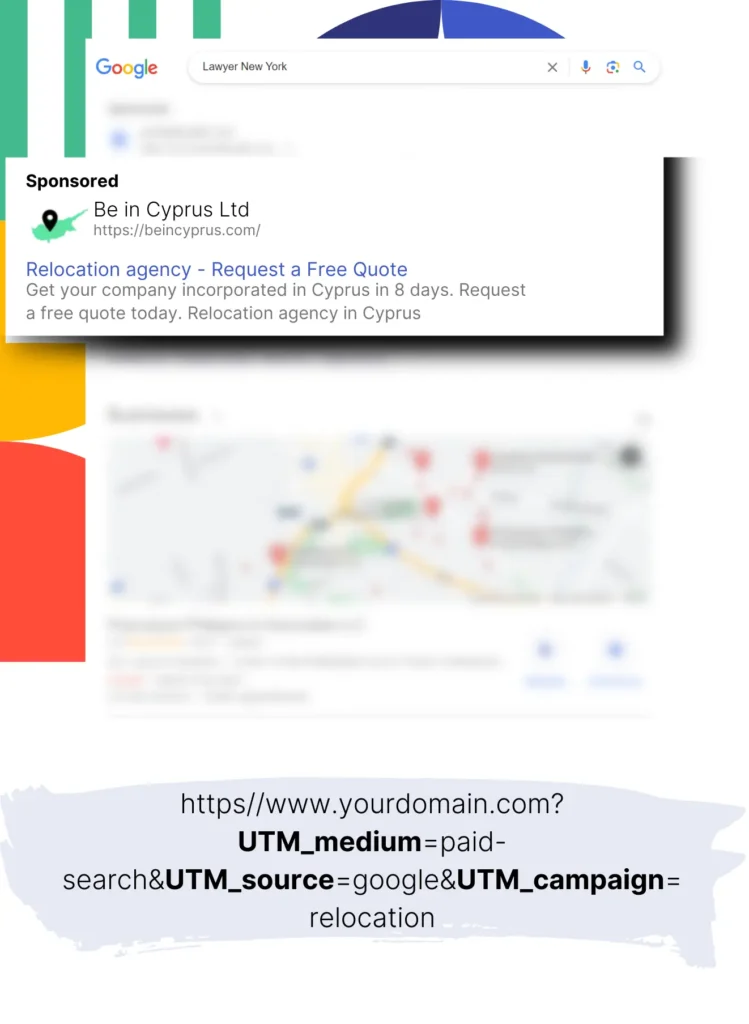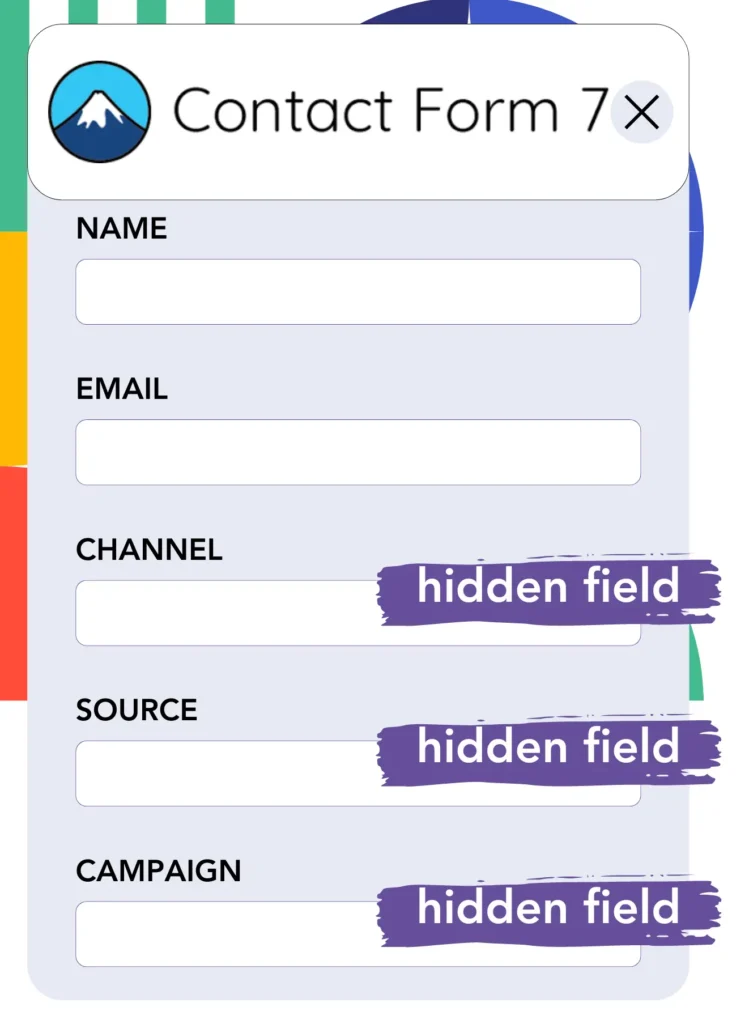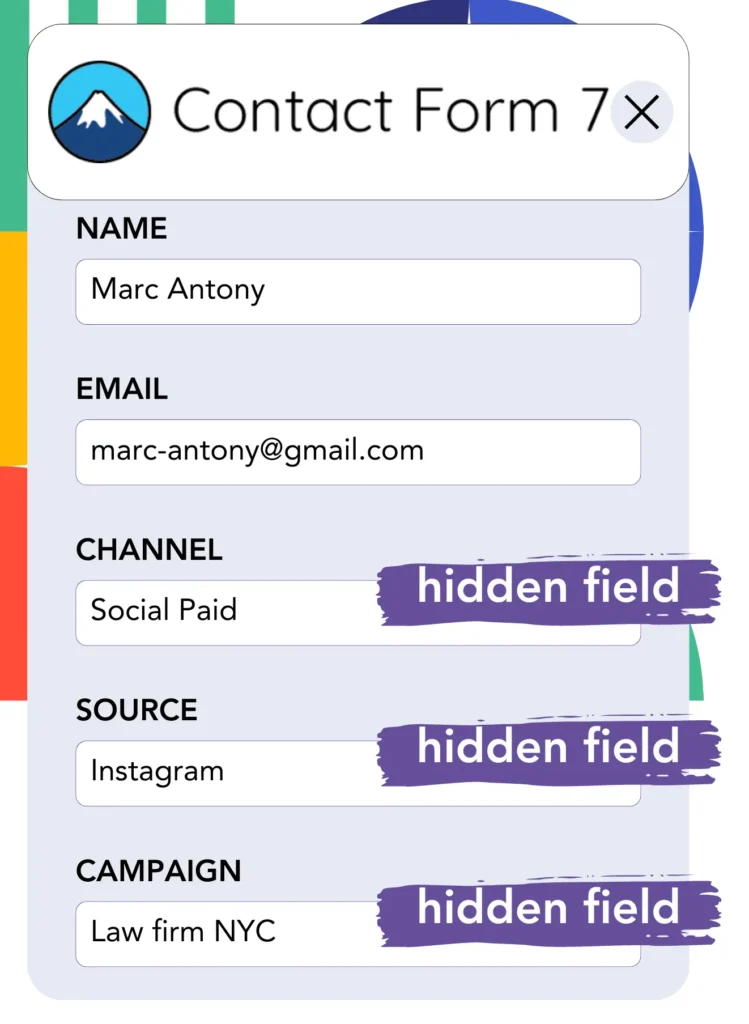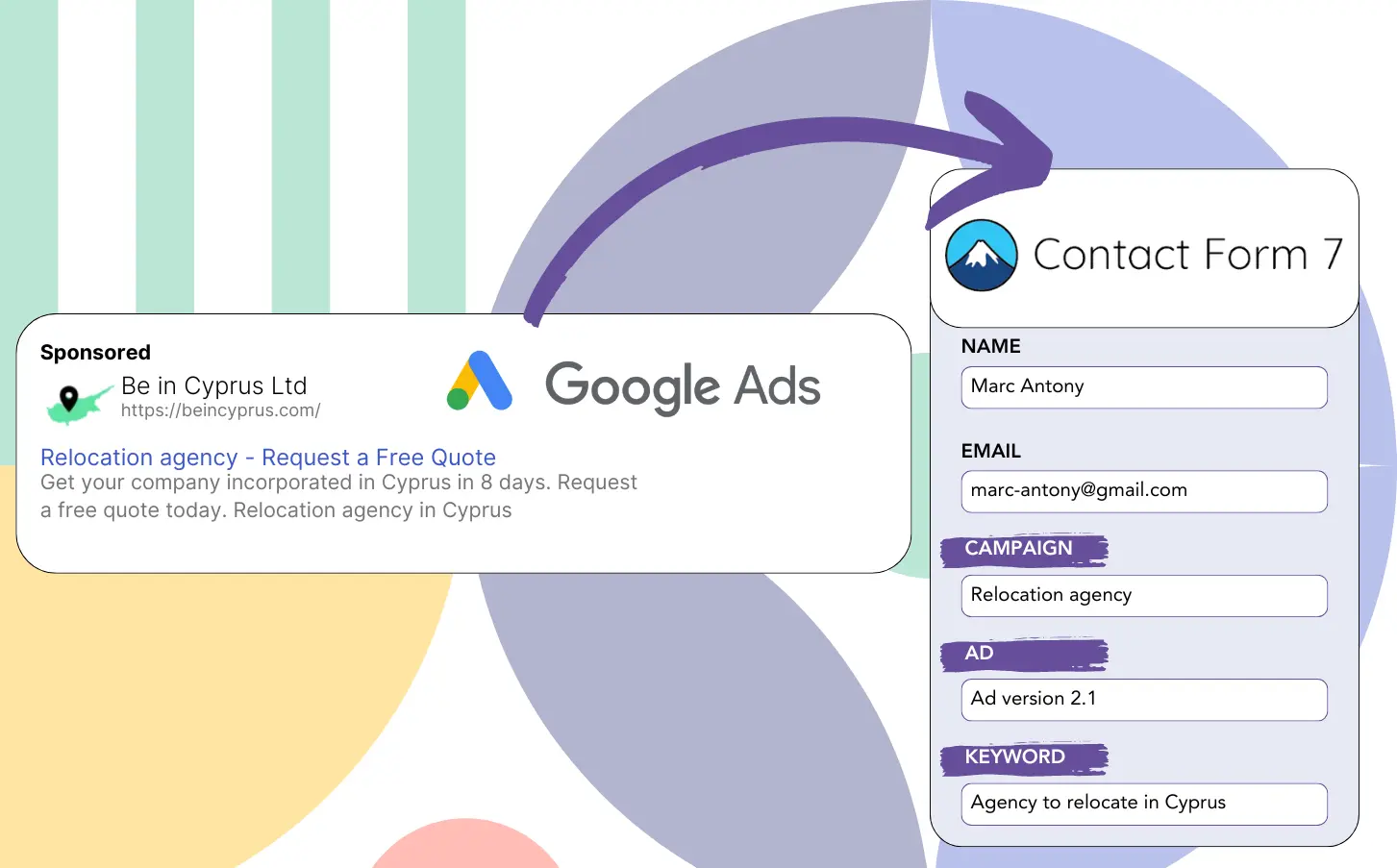You use Google Ads to attract leads, but you’re unsure which campaigns are generating them.
This issue is widely recognized. Google Ads reveals the number of leads from campaigns, ads, or keywords but lacks detailed data on each lead.
Consequently, you are unable to identify which campaign, ad, or keyword produced the leads that turned into customers.
LeadSources offers a solution to this problem.
LeadSources allows you to track your Google Ads data (campaign, ad, keyword, etc.) on a lead-by-lead basis.
You can subsequently save Google Ads data (campaign, ad, keyword, etc.) for each generated lead in Contact Form 7.
You can generate reports like “Keywords that generated the most leads” and decide which keywords to promote or discontinue.
Let’s begin!
Capture Google Ads lead data in Contact Form 7 in 4 steps
Step 1: Add Leadsources in the head tag of your website

Sign up to Leadsources.io, and benefit from our 14-day free trial.
Insert the LeadSources code into your website’s head tag. No coding expertise is needed.
Simply follow this easy step-by-step guide.
Step 2: Add the UTM parameters to your Google Ads campaigns

Include the UTM parameters you want to monitor in all your Google Ads campaigns.
Here are a few UTM parameters you can add to your ad:
- UTM_source
- UTM_campaign
- UTM_term
- UTM_content
LeadSources also captures data beyond UTM parameters, including the channel, landing page, and subfolder, giving you a comprehensive view at the lead level.
Step 3: Add the hidden fields in Contact Form 7

As visitors complete your Contact Form 7 (name, email, etc.), LeadSources automatically populates the hidden fields with Google Ads data (campaign, ad, keyword, landing page, etc.).
To accomplish this, use this step-by-step guide to add hidden fields in Contact Form 7.
LeadSources will store the Google Ads data directly in your Contact Form 7.
Step 4: Capture the Google Ads data in Contact Form 7

When a visitor clicks on your Google Ads ad and reaches your page, LeadSources records the Google Ads data (campaign, ad, keyword, landing page, etc.).
LeadSources automatically adds the Google Ads data to the hidden fields in your Contact Form 7.
When the form is submitted, the Google Ads data (and the form responses) is sent to the submissions page in Contact Form 7.
How does Leadsources work?
Adding the LeadSources code to the head tag of your website will allow it to capture Google Ads data (UTM parameters and referrer) with each visit to your site.
The Google Ads data is then stored in the hidden fields of your Contact Form 7.
Even if a visitor reaches your site without UTM parameters in the URL, LeadSources will still capture data through the referrer:
- Channel
- Source
- Campaign
- Landing page
- Landing page subfolder
This approach lets you monitor key lead source information even without UTM parameters, including:
- On Google Search
- On your Instagram bio link
- On your social media posts
- Etc.
Many tools track lead data only when UTM parameters are present (primarily on paid and referral channels) – which is an issue!
LeadSources collects lead data across all channels, even if UTM parameters are missing:
- Organic Search
- Paid Search
- Organic Social
- Paid Social
- Referral
- Affiliate
- Display Advertising
- Direct Traffic
This lets you collect and consolidate all lead source data into one central place.
Pro tip:
Track Google Ads data in all the popular online form builders, including Cognito Forms, Gravity Forms, Jotform, Typeform, WPForms, and more. Learn how to add Google Ads UTM parameters in any form builder.
How to run performance reports
Now that your Google Ads data is stored in Contact Form 7, you can create performance reports like:
- Leads per campaign
- Leads per ad
- Leads per keyword
- Etc.
This assists you in making informed choices about your Google Ads budget.
Let’s examine the various reports you can generate.
Lead performance reports
You can create reports that show the quantity of leads generated by:
- Channel
- Campaign
- Ad
- Keyword
- Landing page
- Landing page subfolder
Example #1
For campaigns on different channels (SEO, PPC, email, etc.), you can export the data and produce a report titled “Leads by Channel.”

Example #2
Once you find out which channel produces the most leads (e.g., Google Ads), you can focus on this channel to view the lead count for each individual ad campaign.

Example #3
Once you find the campaign generating the most leads, you can look into which specific keywords are producing these leads.

Sales performance report
Knowing which ads and keywords bring in the most leads is helpful, but do they also contribute to higher revenue?
Transferring your Contact Form 7 submissions to a CRM allows you to generate complete sales reports.
Example:
| Channels | Search Paid | Social Paid |
| Leads | 50 | 75 |
| Sales | 5 | 6 |
| Average order value | $150 | $100 |
| Revenue | $750 | $600 |
After advertising on Google and Facebook, you found that Social Paid ads produced a greater number of leads than Search Paid ads.
After several weeks, reviewing lead conversion to paying customers shows that the Search Paid channel brought in more revenue with fewer leads than the Social Paid channel. This suggests raising the budget for Search Paid campaigns.
LeadSources tracks the source of each lead in Contact Form 7, whether they come from ads, organic search, social, email, etc. and syncs that data with each submission. See the full breakdown on the lead source in Contact Form 7 page.

